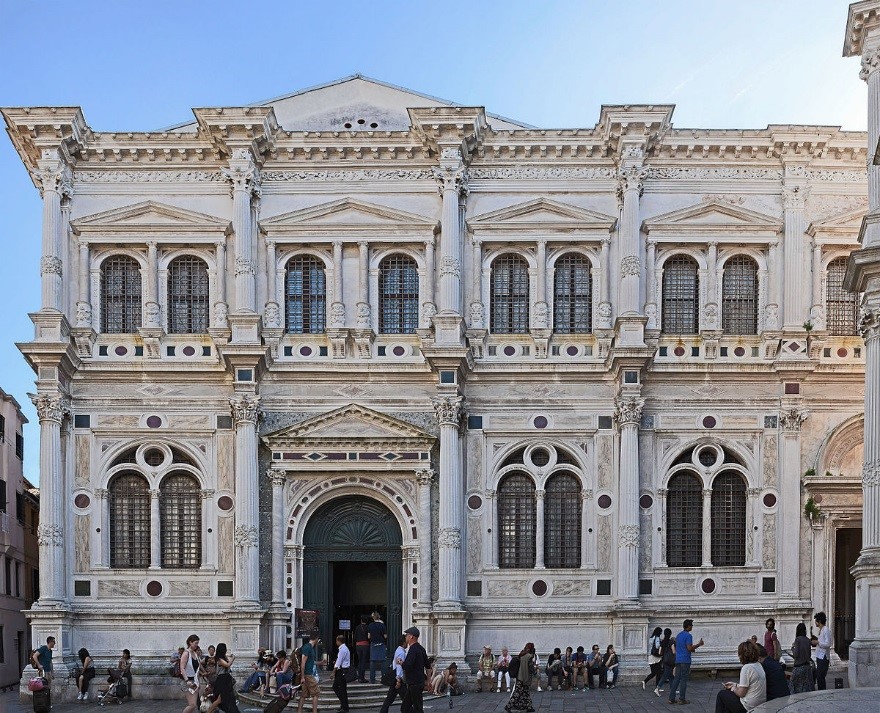From the 14th century, the plague was a frequent occurrence in Venice as in many other parts of Europe, and on three occasions over the following two centuries it decimated the city’s population. Since neither the cause nor the cure were known, Venetians believedGod was punishing them and so they would turn to faith and construct Schools and Churches in honour of a particular saint, usually san Rocco, the protector against plagues. This here is the Scuola Grande di San Rocco, built during the first bout of plague in the Middle Ages. Like all other schools in Venice, this Scuola was funded by a group of wealthy benefactors, whose goal was to help the poor and the sick during times of epidemic crisis.
Of course, as well as engaging in philanthropy, the Scuole in Venice competed with one another for grandeur and splendour, and invested a grea deal on the decorations. The Scuola di San Rocco is famous for Tintoretto’s paintings that adorn the walls and ceiling inside. Opposite the Scuola’s splendid Renaissance façade is the Church of San Rocco, built soon after the Grande Scuola was established.






